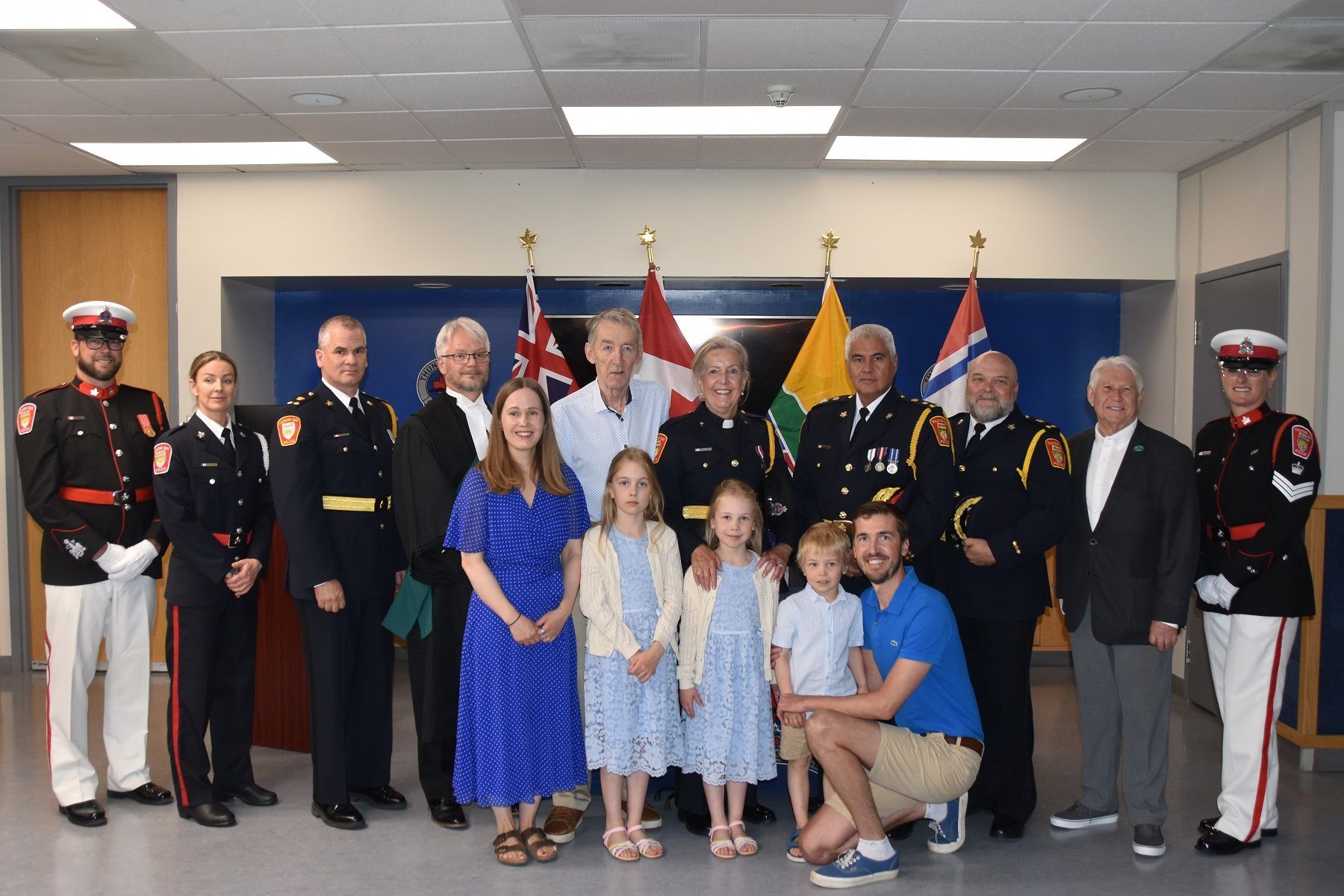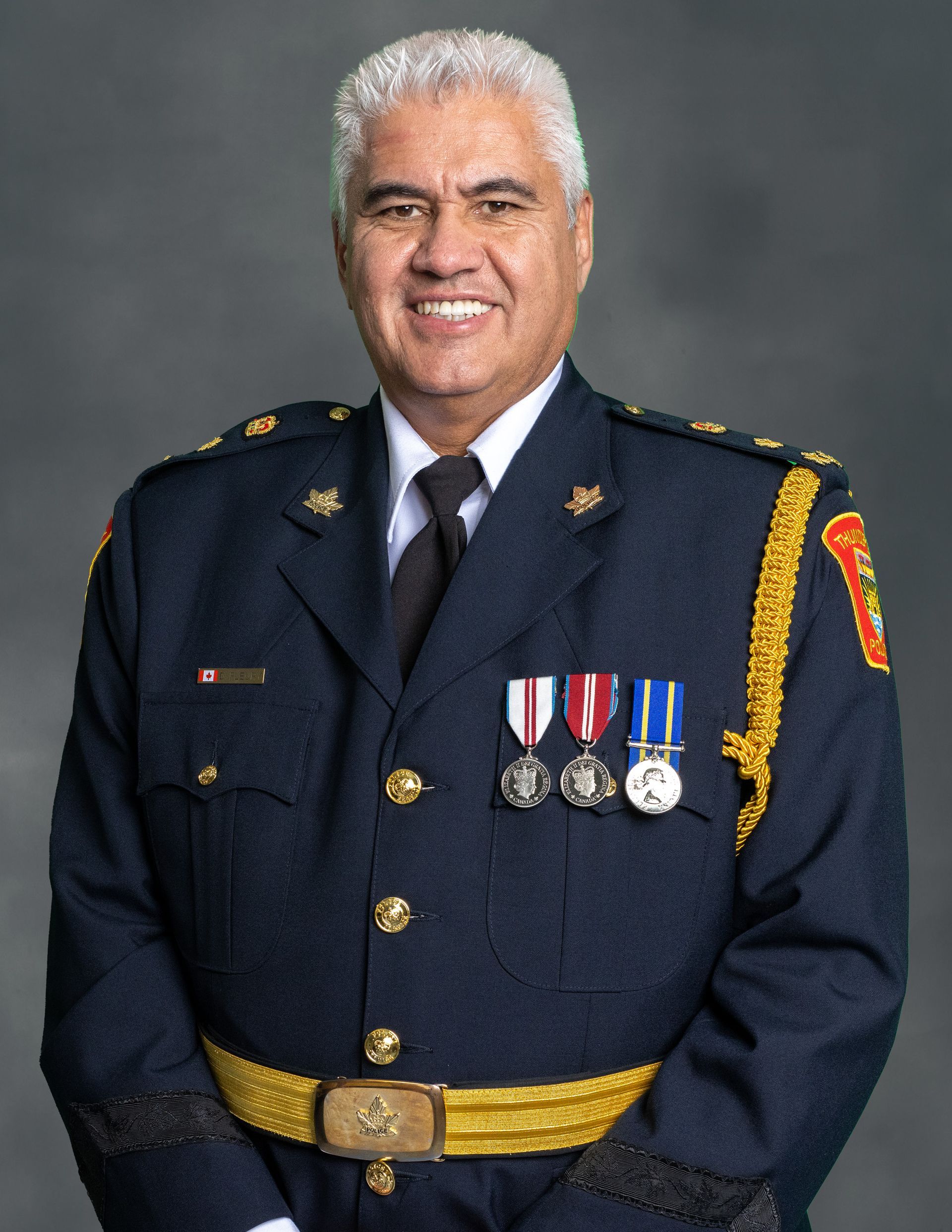Thunder Bay Police Service swears in chaplain

The Thunder Bay Police Service officially welcomed its chaplain on Wednesday.
Chaplain Deobrah Kraft was officially sworn in and took her formal oath during a ceremony at the Thunder Bay Police Service headquarters before Justice of the Peace Jerry Woods, with police leadership including Chief Darcy Fleury and Deputy Chiefs Ryan Hughes and Jeremy Pearson, along with Thunder Bay Police Service Board members Ken Boshcoff and Kasey Etreni, and members of her family in attendance.
Chaplain Kraft has been the Anglican Archdeacon of the Thunder Bay-North Shore Deanery since 2011, and was the priest at St. Paul's Anglican Church from 2005 to 2023.
She led the annual National Police and Peace Officers Memorial Day service in Thunder Bay for many years and began working with the Thunder Bay Police Service in 2020.
"The chaplain is a unique and vital part of our police family," Thunder Bay Police Service Chief Darcy Fleury said. "They are a source of calm, a trusted confidant, and a steady presence in times of both personal and professional crisis."
Chaplain Kraft provides spiritual guidance in a non-denominational manner, whether it being offering support after critical incidents, checking in with members, or sharing inspiring messages.
She holds multiple degrees, including an MBA from the University of Toronto and an Honorary Doctorate of Sacred Theology from Thorneloe University.


